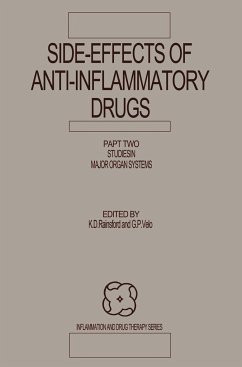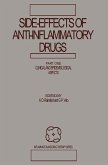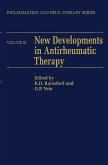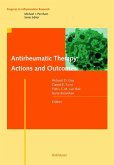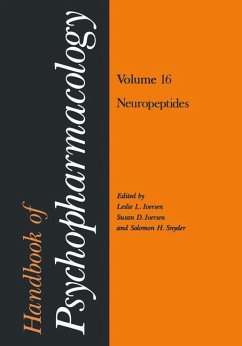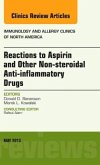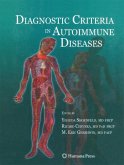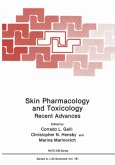Side-Effects of Anti-Inflammatory Drugs
Part Two Studies in Major Organ Systems
Herausgegeben von Rainsford, Kim D.; Velo, G. P.
Side-Effects of Anti-Inflammatory Drugs
Part Two Studies in Major Organ Systems
Herausgegeben von Rainsford, Kim D.; Velo, G. P.
- Broschiertes Buch
- Merkliste
- Auf die Merkliste
- Bewerten Bewerten
- Teilen
- Produkt teilen
- Produkterinnerung
- Produkterinnerung
These two volumes contain the proceedings of a 3 day international meeting held at the University of Cambidge and Queens' College Cambridge from 31st July to 2nd August 1985 on the Side-Effects of Anti-Inflammatory Analgesic Drugs. The first meeting was held in Verona, (Italy) in 1982 and the organisers feIt that, with a number of recent developments including the. withdrawal of a num ber of new anti-inflammatory drugs, and concern being expressed in the lay and specialist medical press and other media about the safety of these drugs, that it was appl'Qpriate to have a second such meeting. The…mehr
Andere Kunden interessierten sich auch für
![Side-Effects of Anti-Inflammatory Drugs Side-Effects of Anti-Inflammatory Drugs]() Side-Effects of Anti-Inflammatory Drugs39,99 €
Side-Effects of Anti-Inflammatory Drugs39,99 €![New Developments in Antirheumatic Therapy New Developments in Antirheumatic Therapy]() New Developments in Antirheumatic Therapy39,99 €
New Developments in Antirheumatic Therapy39,99 €![Antirheumatic Therapy: Actions and Outcomes Antirheumatic Therapy: Actions and Outcomes]() Richard O. Day / Daniel E. Furst / Piet L. Van Riel (eds.)Antirheumatic Therapy: Actions and Outcomes160,49 €
Richard O. Day / Daniel E. Furst / Piet L. Van Riel (eds.)Antirheumatic Therapy: Actions and Outcomes160,49 €![Handbook of Psychopharmacology Handbook of Psychopharmacology]() Handbook of Psychopharmacology77,99 €
Handbook of Psychopharmacology77,99 €![Reactions to Aspirin and Other Non-Steroidal Anti-Inflammatory Drugs, an Issue of Immunology and Allergy Clinics Reactions to Aspirin and Other Non-Steroidal Anti-Inflammatory Drugs, an Issue of Immunology and Allergy Clinics]() Donald D. StevensonReactions to Aspirin and Other Non-Steroidal Anti-Inflammatory Drugs, an Issue of Immunology and Allergy Clinics63,99 €
Donald D. StevensonReactions to Aspirin and Other Non-Steroidal Anti-Inflammatory Drugs, an Issue of Immunology and Allergy Clinics63,99 €![Diagnostic Criteria in Autoimmune Diseases Diagnostic Criteria in Autoimmune Diseases]() Diagnostic Criteria in Autoimmune Diseases179,99 €
Diagnostic Criteria in Autoimmune Diseases179,99 €![Skin Pharmacology and Toxicology Skin Pharmacology and Toxicology]() Skin Pharmacology and Toxicology77,99 €
Skin Pharmacology and Toxicology77,99 €-
-
-
These two volumes contain the proceedings of a 3 day international meeting held at the University of Cambidge and Queens' College Cambridge from 31st July to 2nd August 1985 on the Side-Effects of Anti-Inflammatory Analgesic Drugs. The first meeting was held in Verona, (Italy) in 1982 and the organisers feIt that, with a number of recent developments including the. withdrawal of a num ber of new anti-inflammatory drugs, and concern being expressed in the lay and specialist medical press and other media about the safety of these drugs, that it was appl'Qpriate to have a second such meeting. The meeting was attended by some 300 delegates and the dis cussion focussed most intently on the recent issues, . e. g. the value of adverse drug reaction reporting of the non-. steroidal anti inflammatory (NSAI) drugs, certain side-effects associated with particular NSAI drugs, the predictive value of animal models etc. Organising a meeting de novo without outside help would not have been possible without the immensely valuable help given en thusiastica1ly by people and financial assistance given most generously by those pharmaceutical companies listed below. These financial contributions were given despite current economic dif ficulties and moves to restrict the proportion of profits towards educational actlvities.
Hinweis: Dieser Artikel kann nur an eine deutsche Lieferadresse ausgeliefert werden.
Hinweis: Dieser Artikel kann nur an eine deutsche Lieferadresse ausgeliefert werden.
Produktdetails
- Produktdetails
- Inflammation and Drug Therapy Series Vol.2
- Verlag: Springer / Springer Netherlands
- Artikelnr. des Verlages: 978-94-010-9777-2
- Softcover reprint of the original 1st ed. 1987
- Seitenzahl: 492
- Erscheinungstermin: 8. Mai 2012
- Englisch
- Abmessung: 235mm x 155mm x 27mm
- Gewicht: 689g
- ISBN-13: 9789401097772
- ISBN-10: 9401097771
- Artikelnr.: 40771656
- Herstellerkennzeichnung Die Herstellerinformationen sind derzeit nicht verfügbar.
- Inflammation and Drug Therapy Series Vol.2
- Verlag: Springer / Springer Netherlands
- Artikelnr. des Verlages: 978-94-010-9777-2
- Softcover reprint of the original 1st ed. 1987
- Seitenzahl: 492
- Erscheinungstermin: 8. Mai 2012
- Englisch
- Abmessung: 235mm x 155mm x 27mm
- Gewicht: 689g
- ISBN-13: 9789401097772
- ISBN-10: 9401097771
- Artikelnr.: 40771656
- Herstellerkennzeichnung Die Herstellerinformationen sind derzeit nicht verfügbar.
2 Table of Contents.- Section III Gastrointestinal Tract (Experimental Aspects).- 1 Mechanisms of gastric contrasted with intestinal damage by non-steroidal anti-inflammatory drugs.- Discussion.- 2 The enterohepatic circulation of some anti-inflammatory drugs may cause intestinal ulcerations.- Discussion.- 3 Limitations of laboratory models in predicting gastrointestinal toleration of oxicams and other anti-inflammatory drugs.- 4 Why are non-steroidal anti-inflammatory drugs so gastrotoxic, even when given orally as solubilized salt formulations or parenterally?.- 5 Early and late phases in the formation by anti-inflammatory drugs of intestinal lesions in rats.- 6 Role of intestinal microflora in maintaining indomethacin induced intestinal lesions in rats.- 7 Comparison of gastric mucosal damage and prostaglandin formation in arthritis patients treated with carprofen and ibuprofen.- 8 Inhibition of prostanoid synthesis by anti-inflammatory drugs in human gastric mucosa.- 9 Leukotriene formation in the gastrointestinal tract and effects of anti-inflammatory drugs.- 10 Evidence for sulphydryl-sensitive process in the mechanisms of acute gastric mucosal injury and defence.- 11 Experimental and clinical studies on the prevention of aspirin-induced gastric damage by "cytoprotective" drugs.- 12 Both E prostaglandins and prolonged indomethacin treatment exert trophic effects on the gastric mucosa.- 13 Gastrointestinal side-effects of prostaglandins.- 14 Investigation of auranofin-induced diarrhoea.- 15 Pyrido-pyrimidines - with analgesic and anti-inflammatory activity - inhibit the gastrointestinal mucosal damage induced by different prostaglandin synthesis inhibitors.- 16 Al(OH)3 inhibits aspirin-induced gastric lesions in cats with Heidenhain pouch.- 17 Polyenephosphatidylcholine: an inhibitor of NSAID gastric toxicity which increases impaired mucosal PGE2 synthesis.- 18 Prostaglandins prevent red streaks in rat gastric mucosa caused by intravenous aspirin but not by salicylate.- 19 Gastroduodenal alkaline secretion, mucosal defence mechanisms and the influence of non-steroidal anti-inflammatory agents.- Section IV Antirheumatic and Immunoregulatory Agents.- 20 Side-effects of penicillamine: some recent aspects.- Discussion.- 21 Side-effects of gold complexes and D-penicillamine: genetic aspects.- Discussion.- 22 Anti-malarial induced ocular toxicity during the treatment of rheumatoid arthritis.- Discussion.- 23 Clinical aspects and side effects of sulphasalazine in the treatment of rheumatoid arthritis.- Discussion.- 24 Sulphasalazine: mode of action and side-effects in rheumatoid arthritis and ulcerative colitis.- Discussion.- 25 Side-effects of levamisole: recent aspects.- Discussion.- 26 Toxicology of immunoregulatory agents.- Discussion.- 27 Actions of novel immunoregulants useful in the treatment of arthritis as may be relevant to their toxicity.- Discussion.- 28 Monitoring for gold salt nephropathy and follow-up of gold-induced proteinuria by micro-PAGE electrophoresis.- 29 Long-term (up to 8 years) evaluation of side-effects of gold salts, levamisole and D-penicillamine in rheumatoid arthritis patients.- 30 Side-effect profile of sulphasalazine in inflammatory arthritis.- 31 Penicillamine-induced dermatomyositis and polymyositis.- Section V Glucocorticoids.- 32 Pulsed intravenous methylprednisolone in the treatment of rheumatoid arthritis.- Discussion.- 33 Side-effects in SLE patients treated with methylprednisolone pulse therapy (MPPT).- 34 Mechanisms of bone damage by glucocorticoids.- Discussion.- Section VI Hypersensitivity Conditions.- 35 Aspirin allergy.- Discussion.- 36 Genetic susceptibility toward NSAID induced toxic epidermal necrolysis.- Discussion.- 37 Pathophysiology and pharmacology of asthma.- Discussion.- 38 Photosensitivity due to anti-inflammatory analgesic drugs: a laser flash photolysis study of azapropazone.- Section VII Nephrotoxicity of Nsaids.- 39 Recent studies on the comparative nephrotoxicity of anti-inflammatory agents.- Discussion.- 40 Hospitalizations for renal impairment among users and non-users of non-steroidal anti-inflammatory drugs in Saskatchewan, Canada, 1983.- Discussion.- 41 Anti-inflammatory drugs and renal synthesis of prostaglandins and thromboxane in patients with systemic lupus erythematosus.- Discussion.- 42 The biochemical nephrotoxicity of anti-inflammatory and analgesic drugs: metabolic activation in the medulla and cortex.- Discussion.- 43 Free radical reactions during warm ischaemia and reperfusion of rabbit kidneys: potential therapeutic effects of desferrioxamine in renal transplantation.- Discussion.- 44 The effects of indomethacin, ketoprofen and piroxicam on basal and furosemide-induced sodium excretion in the healthy subject.- Section VIII Special Drug Aspects.- 45 Azapropazone is not a pyrazolidine derivative.- 46 The effect of benoxaprofen on thyroid function.- 47 The response of human platelets to aspirin in vitro.- 48 Differential influences of salsalate, aspirin and naproxen on plasma renin activity and platelet thromboxane (TxB)2 synthesis.- 49 Antihypotensive effects of non-steroidal anti-inflammatory drugs: a study on thermal-induced hypotension.- 50 Mechanism of action of neuropeptides: a group of naturally occurring (endogenous) anti-inflammatory analgesic compounds.
2 Table of Contents.- Section III Gastrointestinal Tract (Experimental Aspects).- 1 Mechanisms of gastric contrasted with intestinal damage by non-steroidal anti-inflammatory drugs.- Discussion.- 2 The enterohepatic circulation of some anti-inflammatory drugs may cause intestinal ulcerations.- Discussion.- 3 Limitations of laboratory models in predicting gastrointestinal toleration of oxicams and other anti-inflammatory drugs.- 4 Why are non-steroidal anti-inflammatory drugs so gastrotoxic, even when given orally as solubilized salt formulations or parenterally?.- 5 Early and late phases in the formation by anti-inflammatory drugs of intestinal lesions in rats.- 6 Role of intestinal microflora in maintaining indomethacin induced intestinal lesions in rats.- 7 Comparison of gastric mucosal damage and prostaglandin formation in arthritis patients treated with carprofen and ibuprofen.- 8 Inhibition of prostanoid synthesis by anti-inflammatory drugs in human gastric mucosa.- 9 Leukotriene formation in the gastrointestinal tract and effects of anti-inflammatory drugs.- 10 Evidence for sulphydryl-sensitive process in the mechanisms of acute gastric mucosal injury and defence.- 11 Experimental and clinical studies on the prevention of aspirin-induced gastric damage by "cytoprotective" drugs.- 12 Both E prostaglandins and prolonged indomethacin treatment exert trophic effects on the gastric mucosa.- 13 Gastrointestinal side-effects of prostaglandins.- 14 Investigation of auranofin-induced diarrhoea.- 15 Pyrido-pyrimidines - with analgesic and anti-inflammatory activity - inhibit the gastrointestinal mucosal damage induced by different prostaglandin synthesis inhibitors.- 16 Al(OH)3 inhibits aspirin-induced gastric lesions in cats with Heidenhain pouch.- 17 Polyenephosphatidylcholine: an inhibitor of NSAID gastric toxicity which increases impaired mucosal PGE2 synthesis.- 18 Prostaglandins prevent red streaks in rat gastric mucosa caused by intravenous aspirin but not by salicylate.- 19 Gastroduodenal alkaline secretion, mucosal defence mechanisms and the influence of non-steroidal anti-inflammatory agents.- Section IV Antirheumatic and Immunoregulatory Agents.- 20 Side-effects of penicillamine: some recent aspects.- Discussion.- 21 Side-effects of gold complexes and D-penicillamine: genetic aspects.- Discussion.- 22 Anti-malarial induced ocular toxicity during the treatment of rheumatoid arthritis.- Discussion.- 23 Clinical aspects and side effects of sulphasalazine in the treatment of rheumatoid arthritis.- Discussion.- 24 Sulphasalazine: mode of action and side-effects in rheumatoid arthritis and ulcerative colitis.- Discussion.- 25 Side-effects of levamisole: recent aspects.- Discussion.- 26 Toxicology of immunoregulatory agents.- Discussion.- 27 Actions of novel immunoregulants useful in the treatment of arthritis as may be relevant to their toxicity.- Discussion.- 28 Monitoring for gold salt nephropathy and follow-up of gold-induced proteinuria by micro-PAGE electrophoresis.- 29 Long-term (up to 8 years) evaluation of side-effects of gold salts, levamisole and D-penicillamine in rheumatoid arthritis patients.- 30 Side-effect profile of sulphasalazine in inflammatory arthritis.- 31 Penicillamine-induced dermatomyositis and polymyositis.- Section V Glucocorticoids.- 32 Pulsed intravenous methylprednisolone in the treatment of rheumatoid arthritis.- Discussion.- 33 Side-effects in SLE patients treated with methylprednisolone pulse therapy (MPPT).- 34 Mechanisms of bone damage by glucocorticoids.- Discussion.- Section VI Hypersensitivity Conditions.- 35 Aspirin allergy.- Discussion.- 36 Genetic susceptibility toward NSAID induced toxic epidermal necrolysis.- Discussion.- 37 Pathophysiology and pharmacology of asthma.- Discussion.- 38 Photosensitivity due to anti-inflammatory analgesic drugs: a laser flash photolysis study of azapropazone.- Section VII Nephrotoxicity of Nsaids.- 39 Recent studies on the comparative nephrotoxicity of anti-inflammatory agents.- Discussion.- 40 Hospitalizations for renal impairment among users and non-users of non-steroidal anti-inflammatory drugs in Saskatchewan, Canada, 1983.- Discussion.- 41 Anti-inflammatory drugs and renal synthesis of prostaglandins and thromboxane in patients with systemic lupus erythematosus.- Discussion.- 42 The biochemical nephrotoxicity of anti-inflammatory and analgesic drugs: metabolic activation in the medulla and cortex.- Discussion.- 43 Free radical reactions during warm ischaemia and reperfusion of rabbit kidneys: potential therapeutic effects of desferrioxamine in renal transplantation.- Discussion.- 44 The effects of indomethacin, ketoprofen and piroxicam on basal and furosemide-induced sodium excretion in the healthy subject.- Section VIII Special Drug Aspects.- 45 Azapropazone is not a pyrazolidine derivative.- 46 The effect of benoxaprofen on thyroid function.- 47 The response of human platelets to aspirin in vitro.- 48 Differential influences of salsalate, aspirin and naproxen on plasma renin activity and platelet thromboxane (TxB)2 synthesis.- 49 Antihypotensive effects of non-steroidal anti-inflammatory drugs: a study on thermal-induced hypotension.- 50 Mechanism of action of neuropeptides: a group of naturally occurring (endogenous) anti-inflammatory analgesic compounds.

